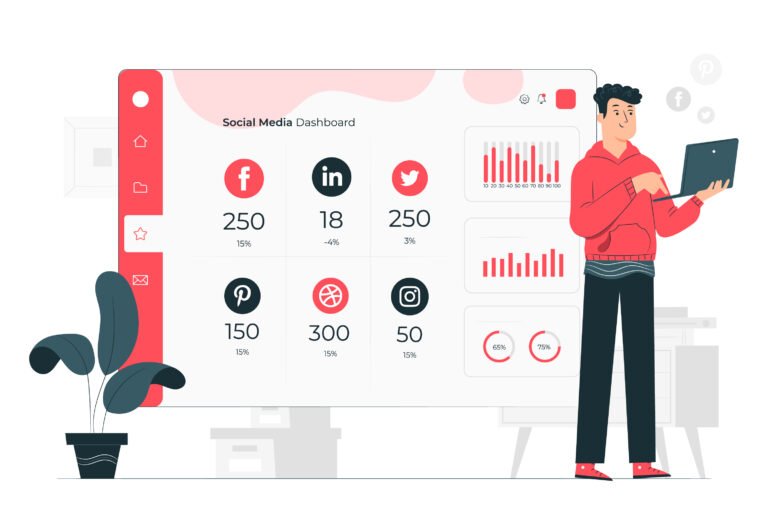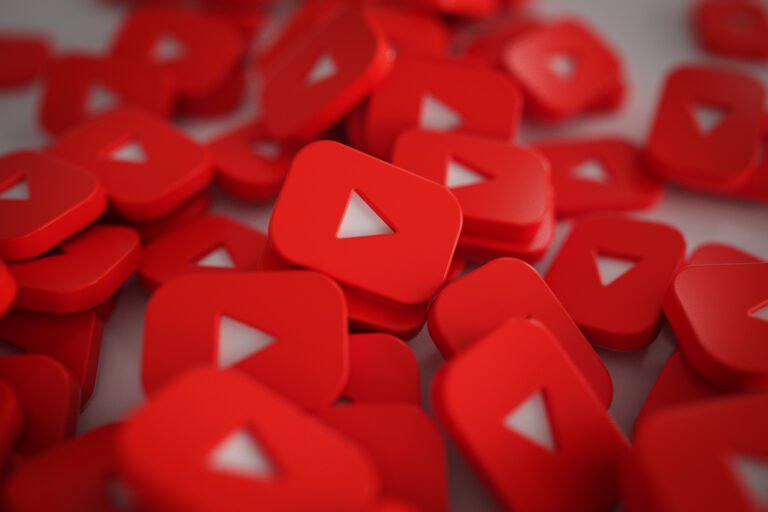1. What Is SEO and Paid Social?
SEO and Paid Social refers to the use of paid advertising on social media platforms like Facebook, Instagram, LinkedIn, Twitter, and TikTok to reach and engage target audiences. It allows businesses to promote their products, services, or content directly to specific user segments based on demographics, interests, behaviors, and more.
SEO, or Search Engine Optimization, is the practice of optimizing your website and content to rank higher in organic (non-paid) search engine results. SEO helps increase visibility and drives consistent, long-term traffic by aligning your content with what users are actively searching for on platforms like Google and Bing.

Why Combining Paid Social and SEO Works
While Paid Social delivers quick, targeted visibility and immediate engagement, SEO builds sustainable, organic growth over time. Combining these two marketing channels creates a powerful synergy that accelerates overall performance.
SEO and Paid Social: Paid Social campaigns can drive high-quality traffic that signals relevance and engagement to search engines, indirectly boosting SEO rankings. Conversely, SEO insights help inform smarter audience targeting and content creation for paid campaigns, making your ad spend more effective.
Together, Paid Social and SEO amplify brand awareness, drive traffic from multiple channels, and ultimately fuel explosive growth that neither channel could achieve alone.
2. Understanding the Basics
Overview of Paid Social Services
Paid Social services encompass all the advertising efforts businesses put behind social media platforms to reach their ideal customers. These services include sponsored posts, carousel ads, video ads, lead generation campaigns, and retargeting. Platforms like Facebook Ads Manager, LinkedIn Campaign Manager, and TikTok Ads offer advanced targeting options that allow brands to deliver tailored messages to very specific audiences based on demographics, interests, behaviors, and more.
The immediate visibility and engagement Paid Social offers make it ideal for promotions, product launches, and demand generation. It’s highly scalable and measurable, providing real-time feedback on ad performance.
Fundamentals of SEO
SEO is a strategic discipline focused on optimizing a website’s content, structure, and technical components to improve organic search rankings. It involves keyword research, on-page optimization, quality content creation, backlink building, and technical SEO fixes like improving site speed and mobile usability.
Unlike Paid Social, SEO is a longer-term play. It builds credibility and authority with search engines, resulting in consistent, free traffic over time. SEO is crucial for capturing intent-driven users actively searching for solutions your business offers.
3. Setting the Foundation: Aligning Paid Social and SEO Strategies
Defining Unified Goals
Before diving into campaigns, it’s essential to establish clear, shared goals for both SEO and Paid Social efforts. Whether your aim is to increase website traffic, generate leads, boost sales, or build brand awareness, having aligned objectives ensures both channels work synergistically rather than in isolation. Setting unified KPIs helps measure the combined impact and optimize accordingly.
Identifying Target Audience Overlaps
Paid Social and SEO often target overlapping audiences but through different touchpoints. Understanding where your ideal customers spend time online — whether searching on Google or browsing social media — helps craft a seamless brand experience. Mapping audience segments between platforms enables consistent messaging and better retargeting strategies.
Keyword Research for Both Channels
Keyword research is a fundamental step for both SEO and Paid Social. For SEO, it involves finding the right search terms your audience uses to find products or services like yours. For Paid Social, understanding these keywords guides ad copy, creative messaging, and audience targeting. Using shared keyword insights ensures your content and ads address the same customer pain points and interests.
4. How Paid Social Can Boost SEO Efforts
Driving Quality Traffic to Improve SEO Metrics
Paid Social campaigns can send targeted, engaged visitors to your website quickly, which positively impacts important SEO metrics like time on site, pages per session, and bounce rate. These improved user engagement signals can indirectly influence search engine rankings, helping your SEO efforts gain momentum faster.
Enhancing Brand Awareness and Search Demand
By consistently exposing your brand on social media through paid ads, you increase brand recognition and recall. This often leads to more branded searches on search engines, which is a strong ranking factor. When users actively search for your brand name or products, it signals to search engines that your site is authoritative and relevant.
Using Paid Social Data to Inform SEO Content
Paid Social provides valuable real-time insights into what content resonates best with your audience—whether it’s certain messaging, creative formats, or offers. You can leverage this data to shape your SEO content strategy, focusing on topics and keywords that have proven engagement, thereby improving your chances of ranking well organically.
5. How SEO Supports Paid Social Campaigns
Optimizing Landing Pages for Paid Traffic
SEO best practices help ensure your landing pages are fast, user-friendly, and highly relevant—factors that improve user experience and increase conversion rates for your paid social ads. A well-optimized landing page not only keeps visitors engaged but also reduces your cost per acquisition (CPA) by boosting ad quality scores.
Using SEO Insights to Refine Paid Social Targeting
SEO data, such as top-performing keywords and content topics, can guide your paid social targeting strategies. For example, if certain keywords or topics attract more organic traffic, you can create paid social ads that highlight those themes to target similar audiences more effectively.
Building Credibility That Improves Ad Performance
Strong organic search presence builds brand credibility and trust among potential customers. When users recognize your brand from search results, they’re more likely to engage positively with your paid social ads, leading to higher click-through rates (CTR) and better overall campaign results.
6. Tactical Approaches to Integration
Content Repurposing Between Channels
Maximize your content’s reach by repurposing SEO-optimized blog posts, videos, or guides into engaging paid social ads. This approach saves time and budget while maintaining consistent messaging across channels. For example, turning a high-performing SEO article into a short video or carousel ad can boost both visibility and engagement.
Retargeting SEO Visitors with Paid Social Ads
Use paid social to retarget users who visited your website through organic search but didn’t convert. By showing tailored ads to these warm prospects on platforms like Facebook or Instagram, you increase the chances of bringing them back and completing the desired action.
Using Social Proof and User-Generated Content (UGC) Across Platforms
Incorporate social proof such as reviews, testimonials, and user-generated content in both your SEO pages and paid social ads. Social proof builds trust, encourages conversions, and helps your brand stand out in both organic and paid channels.

7. Measuring Success
Key Metrics to Track for Paid Social and SEO
SEO and Paid Social: To gauge the effectiveness of your combined strategy, monitor metrics like:
- Paid Social: Click-through rate (CTR), cost per click (CPC), conversion rate, return on ad spend (ROAS), and engagement metrics.
- SEO: Organic traffic, keyword rankings, bounce rate, average session duration, and conversion rate from organic search.
Tracking these together gives a complete picture of how each channel contributes to growth.
Tools for Cross-Channel Analytics
Leverage tools like Google Analytics, Google Search Console, Facebook Ads Manager, and third-party platforms such as SEMrush or HubSpot to unify data from both SEO and paid social campaigns. Setting up proper UTM tracking helps attribute conversions accurately across channels.
How to Optimize Campaigns Based on Data
Use data insights to identify high-performing keywords, audiences, and content types. Optimize paid social ads by focusing on top SEO keywords and reallocate budget toward campaigns driving the best ROI. Similarly, refine your SEO content by incorporating top-performing paid social creatives and messaging.
8. Case Studies: Explosive Growth Through Combined Strategies
Example 1: E-commerce Brand Boosting Sales
An online fashion retailer combined paid social ads targeting key demographics with SEO-optimized product pages. Paid campaigns drove immediate traffic and sales, while SEO improvements increased organic search visibility. Together, this strategy doubled their monthly revenue within six months.
Example 2: B2B Company Increasing Leads
A SaaS company used LinkedIn paid ads to promote gated content informed by SEO keyword research. SEO efforts focused on creating in-depth blog posts targeting industry-specific search terms. The combined approach increased qualified leads by 70% year-over-year.
Lessons Learned
- Aligning content across channels creates consistent messaging that resonates.
- Using paid social data to inform SEO improves content relevance and search rankings.
- Retargeting SEO visitors on social platforms significantly boosts conversion rates.
- 9. Common Challenges and How to Overcome Them
- Budget Allocation Between Paid Social and SEO
- Deciding how much to invest in paid social versus SEO can be tricky. Paid social offers immediate results but requires ongoing spend, while SEO delivers long-term growth but takes time to build. To overcome this, start with a balanced budget split based on your business goals, then adjust dynamically based on performance data.
- Coordinating Teams and Communication
- Paid social and SEO teams often work separately, which can lead to misaligned strategies or duplicated efforts. Encourage regular cross-team meetings and shared reporting tools to foster collaboration and ensure everyone is working toward the same objectives.
- Dealing with Attribution Complexities
- Attributing conversions to either paid social or SEO can be challenging because customers often interact with multiple touchpoints before converting. Use multi-touch attribution models and UTM tracking to gain a clearer understanding of how each channel contributes to conversions.
10. Future Trends in Paid Social and SEO Integration
AI and Automation Impact
Artificial intelligence and automation are transforming how marketers optimize paid social and SEO campaigns. AI-powered tools can analyze large data sets to identify high-performing keywords, audience segments, and ad creatives faster than ever, allowing more precise targeting and content optimization.
Evolving Consumer Behaviors
Consumers today expect personalized, seamless experiences across all digital channels. Integrating paid social and SEO strategies enables brands to meet these expectations by delivering relevant content whether users discover the brand via search or social media.
Preparing for the Next Wave of Growth
To stay ahead, businesses should invest in cross-channel attribution models, embrace new platforms and ad formats, and continually test content variations. Staying agile and data-driven will ensure your SEO and Paid Social efforts keep driving explosive growth.
11. Conclusion
SEO and Paid Social: Combining paid social services with SEO unlocks powerful growth opportunities by leveraging the strengths of both channels. Paid social drives immediate, targeted traffic and engagement, while SEO builds sustainable organic visibility and authority. When aligned with unified goals, shared insights, and coordinated execution, this integrated approach accelerates brand awareness, boosts conversions, and fuels scalable growth.
Start by setting clear objectives, using data to inform both channels, and continuously measuring performance. With the right strategy, your business can achieve explosive growth that neither paid social nor SEO could deliver alone.
Also Read: Facebook Followers vs Likes: What’s More Important for Growth?






